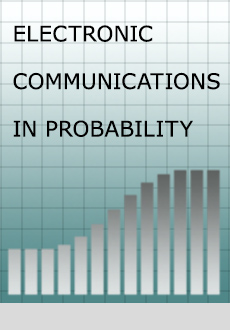Abstract
Consider a Poisson process on $\mathbb{R} $ with intensity $f$ where $0 \leq f(x)<\infty $ for ${x}\geq 0$ and ${f(x)}=0$ for $x<0$. The “points” of the process represent sleeping frogs. In addition, there is one active frog initially located at the origin. At time ${t}=0$ this frog begins performing Brownian motion with leftward drift $\lambda $ (i.e. its motion is a random process of the form ${B}_{t}-\lambda{t} $). Any time an active frog arrives at a point where a sleeping frog is residing, the sleeping frog becomes active and begins performing Brownian motion with leftward drift $\lambda $, independently of the motion of all of the other active frogs. This paper establishes sharp conditions on the intensity function $f$ that determine whether the model is transient (meaning the probability that infinitely many frogs return to the origin is 0), or non-transient (meaning this probability is greater than 0). A discrete model with $\text{Poiss} (f(n))$ sleeping frogs at positive integer points (and where activated frogs perform biased random walks on $\mathbb{Z} $) is also examined. In this case as well, we obtain a similar sharp condition on $f$ corresponding to transience of the model.
Citation
Joshua Rosenberg. "The frog model with drift on $\mathbb{R} $." Electron. Commun. Probab. 22 1 - 14, 2017. https://doi.org/10.1214/17-ECP61
Information





